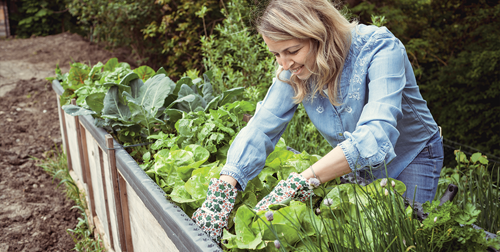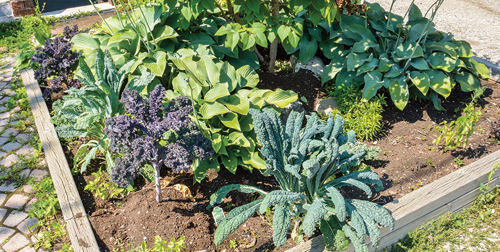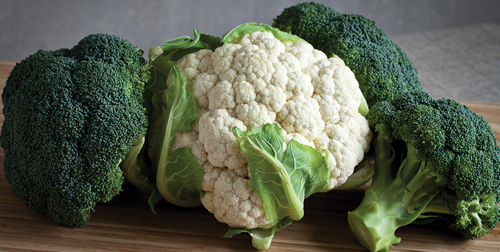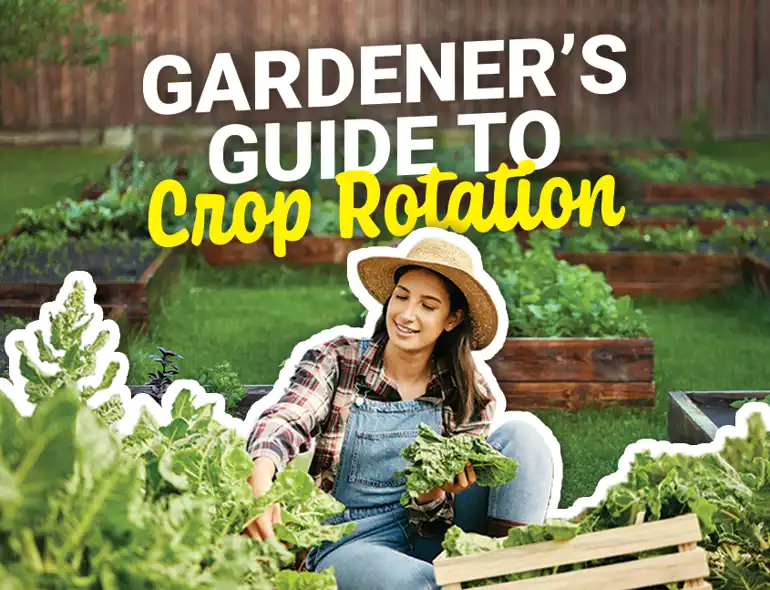The Ultimate Gardener's Guide to Crop Rotation in the Vegetable Garden: A Kaleidoscope of Green Magic
Gardening? Oh, it's not merely about flinging seeds here and there; it's a craft, a dance of sorts, weaving artistry and knowledge, all with a sprinkle of down-to-earth goodness. Now, imagine an old, wise character in this garden story—crop rotation's the name, and guiding those eager little seedlings is its game. Uncelebrated? Maybe, but a true champion in making the soil rich and the vegetables flourish. "Why bother with crop rotation?" I hear you mutter. Because, dear pal, understanding's like a hidden treasure in this garden adventure, and I've got the map. Embrace the spin of crop rotation, and you might find it's as zestful as a whirl on the dance floor when the sun's a'shining, and believe me, it's every bit as necessary. So come on, put on those gardening gloves, and let's jive in the dirt!
- What's the Deal with Crop Rotation?
- How Do I Start to Rotate Crops? Is it a Waltz or a Tango?
- Can Small Gardens Practice Crop Rotation?
- What are the Benefits of Crop Rotation? They Can't Just Be Root Deep, Right?
- Rotate Crops to Avoid Pests - Is it More Than Old Gardener's Tales?
- Understanding Plant Families: Is Broccoli Related to Cauliflower?
- Home Gardens and Raised Beds: A Romance?
- Soil Fertility and Crop Rotation: A Love Story
- How to Improve Soil with Rotation: A Symphony of Nutrients
- Planning Crop Rotations: Breaking the Cycle and Making the Garden Bloom
What's the Deal with Crop Rotation?

Ah, the age-old practice of crop rotation! Imagine your vegetable garden as a lively ballroom where crops waltz with grace. Rotating crops is simply changing dance partners for the soil and plants.
- Crop Magic: Crop rotation is the practice of growing different vegetable families in a specific sequence. Each dance brings new joy, and the soil is never bored. Think of nitrogen as the music; some crops, like legumes, add nitrogen back into the soil, while others, like cabbages and cauliflowers, feed heavily on it.
- Break the Cycle: Rotating crops breaks the cycle of soil-borne diseases and pest problems. So if your tomatoes were attacked last year by a ruthless band of bugs, this year, your soil-dwelling foes will find no tomato to feast on!
How Do I Start to Rotate Crops? Is it a Waltz or a Tango?
Whether you fancy a waltz, tango, or a good ol' twist, starting to rotate crops is an elegant dance all gardeners should master.
- The Rotation Plan: Plan a rotation system, like a four-year rotation. It's like a choreographed dance for your garden, where different crop families take turns on the dance floor.
- Soil Partners: Make sure you know which plants play well together. For instance, heavy feeders like Brussels sprouts shouldn't follow another nutrient-loving crop. It's like trying to dance the cha-cha with two left feet!
Can Small Gardens Practice Crop Rotation?

You bet! Small gardens, big dreams. You don't need acres of land to waltz with your vegetables. The dance can be as intimate as a garden bed.
- Raised Bed Rotation: In a small garden or raised bed, a simple rotation plan can offer many of the same benefits. Rotate crops by their family or nutrient needs; think of it as speed dating for vegetables!
- Think Creatively: Even if your garden is the size of a postage stamp, you can rotate crops by shifting the plant needs and families around. Different vegetable, same dance floor, everybody's happy.
What are the Benefits of Crop Rotation? They Can't Just Be Root Deep, Right?
The benefits of crop rotation are as rich and bountiful as a well-tended vegetable garden. Oh, it's more than just root deep!
- Soil Health: Rotating crops improves soil health, and let's face it, healthy soil makes for happy veggies. Think of crop rotation as a soil spa treatment, where each crop offers something different, like nitrogen or different nutrients, to pamper the soil.
- Pest Control: Crop rotation can reduce pest problems by confusing those tiny critters. One year it's squash, next it's radish, and the pests don't know what hit 'em!
- Harvest Variety: Enough room for different crops means a smorgasbord of fresh produce. You wouldn't wear the same socks every day, would you? So why grow the same plants year after year?
Rotate Crops to Avoid Pests - Is it More Than Old Gardener's Tales?
Oh, it's more real than a rabbit in your lettuce patch! Rotating crops to avoid pests is no mere folklore.
- Break the Bug Cycle: By planting different crops year to year, you can bamboozle the bugs that were looking forward to feasting on last year's favorite. It's like changing the locks on your garden gate!
- Natural Defense: The rotation cycle is a way to rotate away from soil-dwelling nasties. Instead of using chemicals, you're outsmarting them with Mother Nature's own strategy. Take that, you pesky aphids!
Understanding Plant Families: Is Broccoli Related to Cauliflower?

In the grand garden ballroom, every vegetable has a family. Like a family reunion where you discover that you're related to Aunt Kale and Cousin Sprout.
- The Brassica Family: This includes cabbage, cauliflower, broccoli, and Brussels sprouts. They're like the garden's royal family, always looking fine and leafy.
- Legumes: Beans, peas, and lentils are the friendly neighbors who add nitrogen back to the soil, like bringing a potluck dish to share.
Home Gardens and Raised Beds: A Romance?
Home gardens and raised beds go together like turnips and soil, a true garden romance.
- Flexible Dance Partners: Raised beds offer flexibility in planting and are perfect for practicing crop rotation. It's like having a private dance floor for each type of vegetable.
- A Small Garden's Best Friend: Raised beds make crop rotation easier in small gardens, keeping things neat, tidy, and productive. Think of it as speed dating for plants.
Soil Fertility and Crop Rotation: A Love Story
Ah, a tale as old as dirt itself. Soil fertility and crop rotation - a match made in the garden.
- Feed the Soil, Feed the Plants: By growing different plants, you ensure that different nutrients are taken from, and added back into, the soil. It's like a garden potluck where everyone brings their specialty dish.
- Heavy Feeders and Light Feeders: Knowing which plants are heavy feeders and which ones add nutrients (like legumes adding nitrogen) helps plan the dance. It's a delicate waltz, ensuring the soil never goes hungry.
Rotation System: What's the Best Way to Rotate? It's Not Just Spin-the-Bottle with Veggies, Is It?
Spin-the-bottle sure can spark some laughter at parties, but when it comes to the garden, there's a different sort of spinning going on. It's the dance of crop rotation, and it's not just for the wallflowers. It's an art, a touch of science, and a sprinkle of gardening fairy dust.
A Four-Year Twirl: Twirling around with a four-year crop rotation is a garden's way of keeping those pesky soil-borne diseases guessing. Think of it as musical chairs for your garden, with the music never stopping.
Mix 'n' Match Crop Families: Shuffle those different crop families every season, and you'll add a little spice to your soil while leaving pests puzzled. If those critters had heads, they'd be tilting them in confusion, like a dog hearing a high-pitched whistle for the first time!
Can Crop Rotation Improve Soil? How Deep Does This Magic Go?
You know that bold crow of a rooster at dawn, right? Well, the answer to whether crop rotation improves soil is just as loud and clear: it digs deep, and boy, does it make the garden sing!
Add Nitrogen and a Dash of Goodness: Think of legumes as the BFFs of your garden soil. They're like a helpful neighbor lending a cup of sugar - or in this case, adding nitrogen and laying the groundwork for the next crop. Pass the peas, would ya?
Outfoxing Those Soil-Borne Troublemakers: Rotating crops is like a clever game of keep-away with soil-borne diseases. By shuffling things around, those pesky problems get left in the dust, bewildered and beaten. It's a win-win for soil health, a real knock-out punch!
Chinese Cabbage, Mustard Greens, and More: Is There Room for Exotic Veggies in the Rotation Plan?
Exotic vegetables in the garden? Oh, they're like the wild saxophonists in a jazz band, throwing in a thrilling riff here and there. They add flair, surprise, and absolutely dance to the beat of the crop rotation plan.
A Zesty Twist in the Garden: Growing varied veggies, such as Chinese cabbage or mustard greens, is like adding a dash of paprika to a recipe. It brings unexpected flavors not just to your garden, but right onto your dinner plate.
Joining the Garden Groove: Those exotic garden darlings aren't wallflowers; they've laced up their dancing shoes. In the crop rotation cycle, they shimmy right in, ready to swing with the rest of the garden ensemble!
How to Keep a Garden Log: What's the Benefit of Writing About Dirt and Sprouts?

Keeping a garden log isn't merely jotting down notes about soil and little green sprouts, dear gardening pal. Oh no, it's like sketching a story, chronicling triumphs and lessons learned, and trust me, it's as delightful as finding a happy earthworm in your compost heap.
A Playbook for the Seasons: Just imagine, recording what's grown from year to year is like having your very own garden playbook. It's a strategy guide, a tool for success. You're not just planting seeds; you're planning victories for every season.
Want even more great gardening info brought to you directly for free? Sign up below for our newsletter and we can bring the fun directly to you weekly! Or...follow on Facebook, Twitter or Tiktok! We are on 'em all! We'd love expand this community and expand how much we can all help each other with their gardening endeavors!



